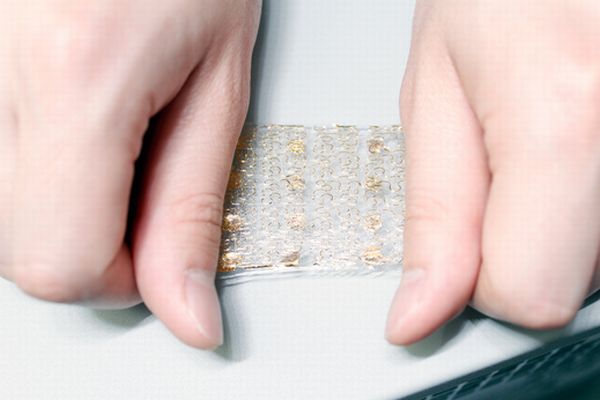Even the most cutting edge technology in prosthetic limbs cannot identify the sensory capabilities of real skin. Although, its manipulation and controls are done with the help of attached muscles and brain yet there have been no way out for detecting the coldness or hotness of a glass its holding. Neither can the wearer detect whether a glass is slipping out of its appendage’s grasp. However, things would no more be the same now, for prosthetics. Korean researchers in collaboration U.S. experts have fabricated an innovative polymer that mimics not only the skin’s elasticity but also its high-resolution sensory capabilities.
Mesh of sensors to give artificial limbs feeling
The polymer is based on complex mesh of sensors that are fabricated from highly thin gold and silicon materials. The resultant stretchable sensing material is one of the most sensitive substances developed till now; it is saturated with nearly 400 sensors per square millimeter. This mesh of concentrated sensors has the ability of producing tactile touch of the same intensity as that of normal hand might otherwise transmit to the brain claimed Roozbeh Ghaffari, one of the researcher.
In order to fit the right stretching ranges and angles, the researchers tuned the sensors with the help of motion-capture cameras, for recording the moves and stretches of a real hand. Accordingly, silicon shapes were applied on various spots the prosthetic skin to adjust that elasticity. In order to give the material a realistic feel, the researchers also included an actuator sheet so that it could remain as warm as that of human skin.
The New Smart Skin
The new smart skin is a breakthrough as it has been successful in providing sensation to prosthetic limbs. However, the bigger picture is still under consideration that is developing resilient and robust connections to the human nervous system. Once the researchers are able to reach that milestone, they would be in a better position to endow prosthetic wearer the ability to feel of what he is been sensing.
Dae-Hyeong Kim, a researcher at Seoul National University demonstrated working of the interface by placing the smart skin on a rodent’s brain. Then sensory input was given and accordingly reaction in the rat’s sensory cortex was noted. However, they were not able to gauge the element of ‘feeling’ such as heat, pressure or moisture since it can only be measured by applying on higher animals, to which they claim will be their next step in research.
Source: MIT Technology Review




